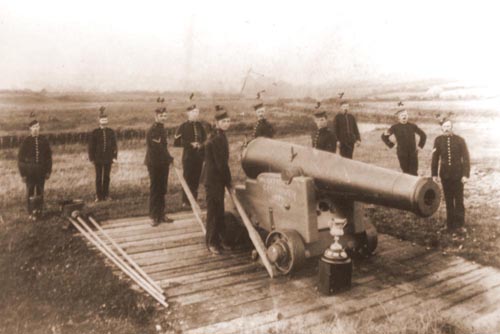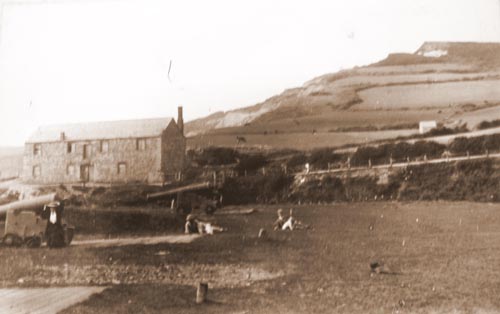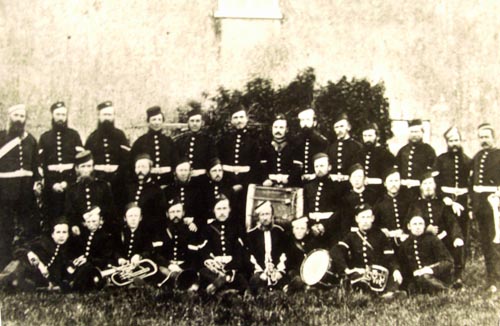Click on images or Charmouth Home to return back.



The Volunteers first took hold of public favour in 1863”. So reads the Bridport News for the 20 th April, 1886; but the first official record of those of Charmouth appears in the Army List for January, 1886, where they are entered as the 5th Charmouthof the 1st . Dorset Artillery Corps, R.G.A., and united to I.A. Br. Devon Artillery Volunteers. In this entry no Officers names are given; but in the list for April, 1866, Charles Brown is entered as 1 st . Lieutenant., and in July 1866, Henry E. Norris as Hon. Surgeon. Later dr. Norris was Captain, and Mr George Pavey, Lieutenant. But in 1891, the Corps was again without Officers.
The following is the list of the later Sergeant Instructors. H.Hopkinson, Parrot, Porter, W. Moore and Coleman, who was transferred to Bridport when the Charmouth Corps was disbanded in 1895.
Both Dr. Norris and sergeant major Parrot were buried in Charmouth Churchyard with Military Honours, and the Volunteers fired a salute over their graves.
The Volunteers drilled in a hall, which a persistent village rumour declares was once a chapel. When the Corps was disbanded it remained vacant for some years and latewr it was converted by Mr J. Toms into a dwelling house; the building was then used as a Telephone Exchange.
The Volunteers manoeuvred on the sward, which lay between the limbs of the meander at the rivers mouth. There they emplaced their artillery, and set up a target for rifle practice on the cliff by the Vineyard. At first they had horse drawn lumber guns with big spoke-wheels. On going further a field on one occasion, they took these guns up Hardown Hill, but had to abandon one, which had become a casualty on High Bullen. There Squire Weld would use it for celebrations, and there the derelict gun could still be seen several years later. In time, New guns, two 24. pounders and one 64 pounder, replaced the old, and were mounted on platforms made of railway sleepers; and a magazine house was built alongside.
Of the Charmouth villagers, none was a keener Volunteer than A.B. Hann. When only 12 years old he joined as Trumpeter. His duties comprised calling the men to drill three nights a week by sounding the Assembly through the street at 7 O'clock at six places; and for this he was paid 30/- a year. He was Corporal in 1891,when Charmouth won the County Cup for gunnery, and Sergeant-Major when the Volunteers were disbanded in 1895.
The Dorset Artillery Corps annually competed for the Challenge Cup, which Charmouth won at Pebble Point Battery, at Swanage. On this occasion Charmouth scored 45 points out of a possible 46, in 4 minutes, 40 seconds, making three direct hits at 2,000 yards range. They were taught by Sergeant Instructor Moore, “ who is much to be complimented on the admirable way in which he has trained the Corps, in spite of the difficulty that there was no officers attached to the Corps”.
When the Volunteers ceased in 1895, their Band was retained as the Village Band. Ernest Gollop and A. Brandon Hann had already served as Band- Masters, and the latter led the new Village Band. On the outbreak of war in 1914, those who volunteered for service were played in by the Band outside the Coach and Horses; and subsequently this ceremony was repeated for each new recruit, until the Band could no longer muster enough new men to function, and so died a natural death. It was never revived. The final residue, Lionel White, A. Brandon Hann and Bob Clarke then joined the Lyme Town Band, of which Hann became the Band Master.